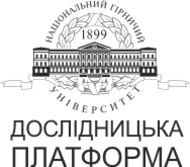№80-8
On the issue of the rational planning of mining operations for underground coal gasification
P. Saik1, D.Yankin1
1Dnipro University of Technology, Dnipro, Ukraine
Coll.res.pap.nat.min.univ. 2025, 80:81–92
Full text (PDF)
https://doi.org/10.33271/crpnmu/80.081
ABSTRACT
Purpose. To substantiate the spatial layout parameters of underground gasifiers, considering the operational losses of coal within the mine field.
Methods. The underground coal gasification process was studied under laboratory conditions through physical modeling of a coal seam using a specialized stand-based setup. This approach enables reproducing key elements and parameters of the gasification process in a controlled environment. The setup simulates the characteristics of coal seam occurrence, within which operational boreholes are formed – one for supplying the blast mixture (air, oxygen, or steam) and another for extracting the producer gas.
Results. The study examined the formation parameters of the gasified cavity of the underground gasifier at the late stage of mining during coal gasification via vertical boreholes. Quantitative indicators of coal conversion were established for the gasification of thin coal seams. A comparative analysis of operational coal losses within the mine field was conducted for two development systems: one with the parallel placement of underground gasifiers and another involving zonal distribution of losses within the gasifiers.
Originality. It has been established that the maximum width of the underground gasifier (13.9–15.4 m) and the length of the combustion front (33.6–37.3 m) at the final stage of gasification directly depend on the thickness of the coal seam (0.7–1.2 m). It was revealed that the gasifier width follows an exponential growth pattern while the combustion front length changes according to a logarithmic relationship. These dependencies are essential for predicting the dynamics of gasified cavity development in underground gasifiers and determining optimal locations for operational boreholes.
Practical implication. A coal seam development system that includes zonal distribution of losses within underground gasifiers’ boundaries is proposed based on the cavity formation parameters at the late mining stage. An algorithm is also proposed to estimate operational coal losses during underground gasification.
Keywords: coal gasification, underground gasifier, gasified cavity, borehole, operational losses, development system.
References
1. Burton, E., Upadhye, R., & Friedmann, S. (2019). Best Practices in Underground Coal Gasification. Office of Scientific and Technical Information (OSTI). https://doi.org/10.2172/1580018
2. Saik, P., Petlovanyi, M., Lozynskyi, V., Sai, K., & Merzlikin, A. (2018). Innovative Approach to the Integrated Use of Energy Resources of Underground Coal Gasification. Solid State Phenomena, 277, 221–231. https://doi.org/10.4028/www.scientific.net/ssp.277.221
3. Kačur, J., Laciak, M., Durdán, M., & Flegner, P. (2023). Investigation of Underground Coal Gasification in Laboratory Conditions: A Review of Recent Research. Energies, 16(17), 6250. https://doi.org/10.3390/en16176250
4. Perkins, G. (2018). Underground coal gasification – Part I: Field demonstrations and process performance. Progress in Energy and Combustion Science, 67, 158–187. https://doi.org/10.1016/j.pecs.2018.02.004
5. Falshtynskyi, V., Saik, P., Lozynskyi, V., Dychkovskyi, R., & Petlovanyi, M. (2018). Innovative aspects of underground coal gasification technology in mine conditions. Mining of Mineral Deposits, 12(2), 68–75. https://doi.org/10.15407/mining12.02.068
6. Xin, L., Wang, Z., Wang, G., Nie, W., Zhou, G., Cheng, W., & Xie, J. (2017). Technological aspects for underground coal gasification in steeply inclined thin coal seams at Zhongliangshan coal mine in China. Fuel, 191, 486–494. https://doi.org/10.1016/j.fuel.2016.11.102
7. Pivnyak, G., Falshtynskyi, V., Dychkovskyi, R., Saik, P., Lozynskyi, V., Cabana, E., & Koshka, O. (2020). Conditions of Suitability of Coal Seams for Underground Coal Gasification. Key Engineering Materials, 844, 38–48. https://doi.org/10.4028/www.scientific.net/kem.844.38
8. Dychkovskyi, R.O. (2013). Naukovi zasady syntezu tekhnolohii vydobuvannia vuhillia iz tonkykh ta nadtonkykh plastiv u slabometamorfizovanykh porodakh. Dnipropetrovsk, Ukraina: Natsionalnyi hirnychyi universytet.
9. Marciniak-Kowalska, J., Niedoba, T., Surowiak, A., & Tumidajski, T. (2014). Multi-CriteriaEvaluation of Coal Properties in Terms of Gasification. Archives of Mining Sciences, 59(3), 677–690. https://doi.org/10.2478/amsc-2014-0047
10. Sotskov, V.O., Zahrytsenko, A.M., & Dereviahina, N.I. (2019). Obgruntuvannia hirnycho-heolohichnykh parametriv zastosuvannia resursozberihaiuchoi tekhnolohii selektyvnoi vidrobky vuhilnykh plastiv dlia Zakhidnoho Donbasu. Vcheni zapysky Tavriiskoho natsionalnoho universytetu imeni V.I. Vernadskoho. Seriia: Tekhnichni nauky, 30(69), 17–23. https://tech.vernadskyjournals.in.ua/journals/2019/6_2019/part_2/6-2_2019.pdf
11. Saik, P., & Yankin, D. (2024). Development of methodology for research in hydrogen-oriented underground coal gasification technology. Naukovyi Visnyk Donetskoho Natsionalnoho Tekhnichnoho Universytetu, 1(12), 129–138. https://doi.org/10.31474/2415-7902-2024-1-12-129-138
12. Hamanaka, A., Su, F., Itakura, K., Takahashi, K., Kodama, J., & Deguchi, G. (2017). Effect of Injection Flow Rate on Product Gas Quality in Underground Coal Gasification (UCG) Based on Laboratory Scale Experiment: Development of Co-Axial UCG System. Energies, 10(2), 238. https://doi.org/10.3390/en10020238
13. Saik, P., Lozynskyi, V., Falshtynskyi, V., Demydov, M., & Hanushevych, K. (2019). Research into heat and mass indicators of coal gasification process. Collection of Research Papers of the National Mining University, 57, 32–44. https://doi.org/10.33271/crpnmu/57.032
14. Sakhno, I., Sakhno, S., & Vovna, O. (2025). Surface Subsidence Response to Safety Pillar Width Between Reactor Cavities in the Underground Gasification of Thin Coal Seams. Sustainability, 17(6), 2533. https://doi.org/10.3390/su17062533




